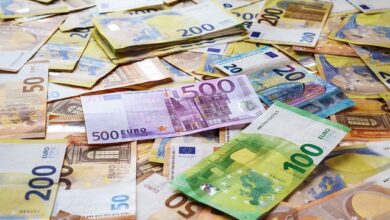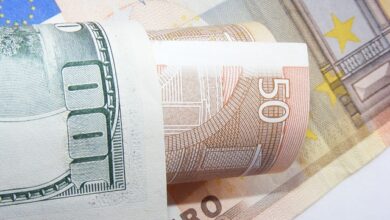Comparing Grocery Prices in Belgium: A Comprehensive Guide

Belgium is known for its high quality of life, but like many Western European countries, it can also be relatively expensive. Understanding grocery prices is essential for budgeting, whether you’re a resident, an expat, or a traveler planning an extended stay. This guide compares grocery prices across different categories, explores regional variations, and provides tips for saving money while shopping in Belgium.
1. Overview of Grocery Prices in Belgium
Grocery prices in Belgium are generally higher than the EU average due to factors such as labor costs, taxes, and import fees. However, there are ways to manage expenses by choosing affordable stores, buying local products, and taking advantage of discounts.
Average Monthly Grocery Costs
- Single Person: €200–€300 per month.
- Family of Four: €600–€800 per month (depending on dietary preferences and lifestyle).
2. Comparing Prices Across Categories
Here’s a breakdown of common grocery items and their average prices:
A. Fresh Produce
Fresh fruits and vegetables are widely available in supermarkets, markets, and specialty stores. Prices vary by season and origin (local vs. imported).
| Item | Average Price |
|---|---|
| Apples (1 kg) | €2.50–€4.00 |
| Bananas (1 kg) | €1.50–€2.50 |
| Tomatoes (1 kg) | €3.00–€5.00 |
| Carrots (1 kg) | €1.00–€2.00 |
| Lettuce (1 head) | €1.00–€2.00 |
B. Meat and Seafood
Meat is relatively expensive in Belgium, with prices varying based on type and quality.
| Item | Average Price |
|---|---|
| Chicken Breast (1 kg) | €8.00–€12.00 |
| Beef (1 kg) | €15.00–€25.00 |
| Pork (1 kg) | €7.00–€12.00 |
| Salmon (1 kg) | €15.00–€25.00 |
| Shrimp (1 kg) | €20.00–€30.00 |
C. Dairy Products
Dairy is a staple in Belgian diets, and prices are moderate compared to other categories.
| Item | Average Price |
|---|---|
| Milk (1 liter) | €0.80–€1.50 |
| Cheese (1 kg) | €10.00–€20.00 |
| Butter (250 g) | €1.50–€3.00 |
| Eggs (12-pack) | €2.50–€4.00 |
D. Bread and Bakery Items
Bread is affordable and widely consumed in Belgium.
| Item | Average Price |
|---|---|
| Baguette | €0.80–€1.50 |
| Loaf of White Bread | €1.50–€3.00 |
| Croissant | €0.80–€1.50 |
E. Beverages
Belgium is famous for its beer, but soft drinks and water are also readily available.
| Item | Average Price |
|---|---|
| Bottled Water (1.5 L) | €0.50–€1.50 |
| Coca-Cola (2 L) | €1.50–€2.50 |
| Local Beer (0.33 L) | €1.50–€3.00 |
| Coffee (250 g ground) | €5.00–€10.00 |
F. Snacks and Sweets
Belgian chocolates and waffles are iconic but can be pricey.
| Item | Average Price |
|---|---|
| Chocolate Bar (100 g) | €1.50–€4.00 |
| Belgian Waffle | €2.00–€5.00 |
| Potato Chips (200 g) | €2.00–€4.00 |
3. Regional Variations in Prices
Belgium has three main regions—Flanders, Wallonia, and Brussels—each with slight differences in grocery prices:
- Flanders (North): Generally more expensive due to higher living costs in cities like Antwerp and Ghent.
- Wallonia (South): Slightly cheaper, especially in rural areas.
- Brussels-Capital Region: Prices are the highest, reflecting the capital’s status as an international hub.
4. Popular Grocery Stores in Belgium
Belgium has a mix of local and international supermarket chains catering to different budgets:
Budget-Friendly Stores
- Lidl: Known for low prices and private-label products.
- Aldi: Offers affordable groceries and household items.
- Colruyt: A popular Belgian chain with competitive pricing.
Mid-Range Stores
- Carrefour: Offers a wide range of products at reasonable prices.
- Delhaize: A well-known Belgian chain with slightly higher prices but better quality.
- Spar: Convenient for quick shopping trips.
Premium Stores
- Albert Heijn: Higher-end Dutch chain with gourmet options.
- Bio-Planet: Specializes in organic and eco-friendly products (more expensive).
5. Tips for Saving Money on Groceries
To stretch your budget while grocery shopping in Belgium, consider these strategies:
A. Shop at Discount Stores
Stores like Lidl, Aldi, and Colruyt often have lower prices than premium chains.
B. Buy Local and Seasonal
Local produce is fresher, supports farmers, and tends to be cheaper than imported goods.
C. Take Advantage of Promotions
Look for weekly sales, loyalty programs, and bulk discounts.
D. Visit Markets
Street markets, such as those in Brussels or Bruges, offer fresh produce and artisanal goods at competitive prices.
E. Cook at Home
Eating out in Belgium can be costly, so preparing meals at home is a great way to save money.
F. Avoid Tourist Areas
Groceries near tourist attractions are often overpriced. Stick to residential neighborhoods for better deals.
6. Comparing Belgium to Other Countries
Belgium’s grocery prices are higher than some neighboring countries like Germany and the Netherlands but comparable to France and Luxembourg. Here’s a rough comparison:
| Country | Average Grocery Cost (Family of Four) |
|---|---|
| Belgium | €600–€800/month |
| Germany | €500–€700/month |
| Netherlands | €550–€750/month |
| France | €600–€800/month |
| Luxembourg | €700–€900/month |



